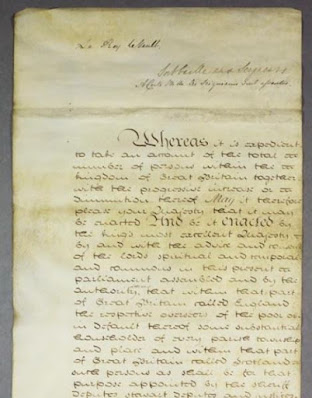Go into reverse to go forward through a brick wall.
Do you know what reverse genealogy is? If not read on. It's one way of trying to break down those brick wall ancestors we all have.
One thing I have found is that the further you go back on your family tree, the closer families seemed to live to each other. Specifically I would look at these records for clues:
- LAND - where did siblings and children have property, did your ancestor have property in the same area? Did they go to the same local church?
- CENSUS - I have found several people living with their children or in the same house as a sister/brother, and of course census records will give you a great deal of information. Don't forget to look at the neighbours - are they in the same trade? Where did they go to next?
- VOTER REGISTRATION - In Australia that means the Electoral Roll. Again, you are looking for a location that might give you a vital clue.
- OLD BOOKS - try the google books search for local histories where your ancestor might have lived. (eg. History of Goulburn). In Australia, there are lots of books about the early settlement of particular towns and areas, and they often list the 'pioneers' of the town.
- NEWSPAPERS - Trove.nla.gov.au is the best resource for Australia. Search for the names of children and siblings. You may find a notice that lists the siblings and children, plus where they are living at the time. You could even find an obituary.
- FIND A GRAVE - through this site, you may find ancestors buried with their children, spouse, or other family members.
- FAMILY HISTORY ASSOCIATIONS - these are a great resource in Australia, and if you are fairly sure of a family's links to a particular town, they may be able to help.
And if you are getting nowhere - ASK FOR HELP! Check Facebook for a group that may be able to help. Try Rootschat, its a great community of helpers. Contact a LIBRARIAN in the local area your ancestor lived in.
I was recently looking at my brother in law's family tree and trying to find the Colyer family. Particularly James William Colyer. Looking at Ancestry I came across one tree that listed his wife as marrying a man named Liddle, but of course no sources, so how could I know it might be true. A search of BDM sites came up with nothing, nothing on the electoral roll, and no notice of a marriage in the newspapers. So I decided to look at the children of the first marriage that were not on the direct line I was after.
Finaly, after a few searches on TROVE I found two marriage announcements with similar information. I searched the surname of the possible second husband.
This gave me the information that Elsie May, youngest son of the late James Colyer and Mrs Liddle - was getting married. Actually her name was Colyer, but it had not been listed that way. Another daughter had a similar announcement just a year later. This confirmed that Sophie (Ryan) Colyer, must have married a man called Liddle. That led me to find the marriage and Sophie's death. It also gave me a connection to Marrickville.
IMPORTANT TIP - It is very easy to get lost in this type of research, and go over ground you have already researched, so my best tip is to keep a log of what searches you do, and what names you use. That way you will not (hopefully!) get lost.
So if you have a brick wall, try reverse genealogy and look for clues about your ancestor in their extended family.





Comments
Post a Comment
Thank you for your comment on my Blog. I love to get feedback and information to share from my readers.
To keep up to date simply follow me on facebook or subscribe using the button at the top of the blog page.
Barb